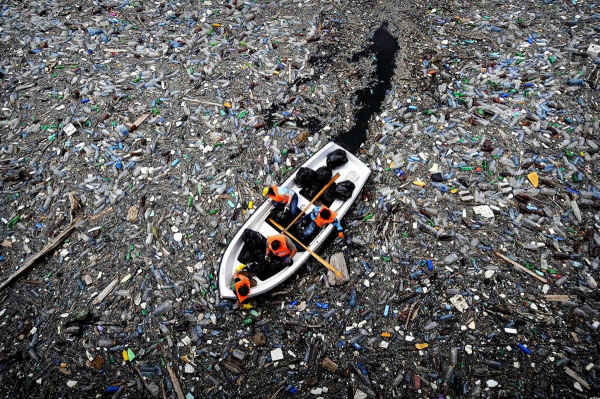Why yes, this would be the Great Pacific Garbage Patch, also known as the Pacific Trash Vortex, a floating conglomeration of plastic, chemical sludge and trash that the Earth cannot digest, between Hawaii and California. Basically, when trash is deposited into the ocean, currents find their ways of pushing it into a certain spot where it remains trapped, and voila, a new island.
The Pacific Trash Vortex's size ranges from 700,000 square kilometers (270,000 sq mi) to more than 15,000,000 square kilometers (5,800,000 sq mi) (0.41% to 8.1% of the size of the Pacific Ocean), or, in some media reports, from the size of Texas up to twice the size of the continental United States (wikipedia). Oh yes, this is what it has come to.
…do you see your trash floating around in there?
Plastic remnants big and small bob in the water and birds and turtles, mistaking them for food (the turtles often for jellyfish and birds for fish), eat them. Let me assure you, birds and turtles were not designed to eat plastic; what you end up with are dead birds and turtles.
 |
| 317 articles of plastic found inside a dead turtle's digestive system |
 |
| Sea turtle stuck in plastic bags |
So no one is taking responsibility for this, of course. No one is doing anything to clean it up, really. No one really seems to care much at all. And with all the petroleum being used to make the plastic, you can be sure that plastic production won’t be slowing down anytime soon. Not to mention, this isn't the only trash vortex - the North American Garbage Patch and the Indian Ocean Garbage Patch are just as bad.
But you, dear readers, you can help.
Please reduce your plastic consumption and make sure all recyclables get into their appropriate bins - and make sure you take the pledge to refuse single-use plastics! You can also visit The Great Garbage Patch site for more information.


No comments:
Post a Comment